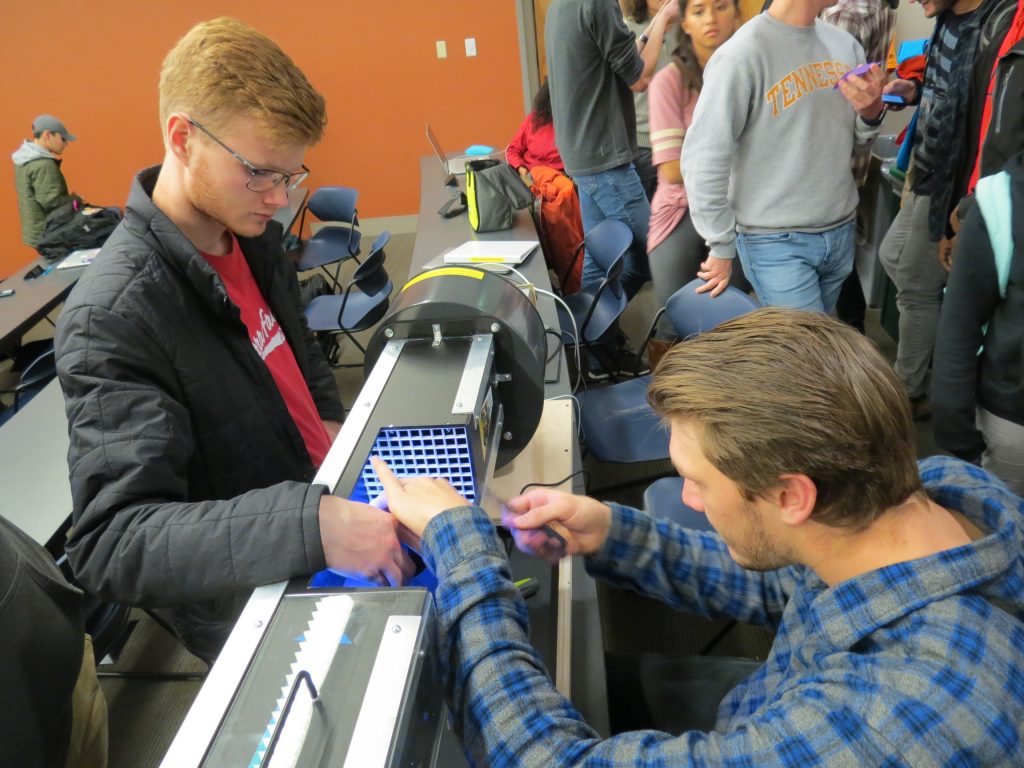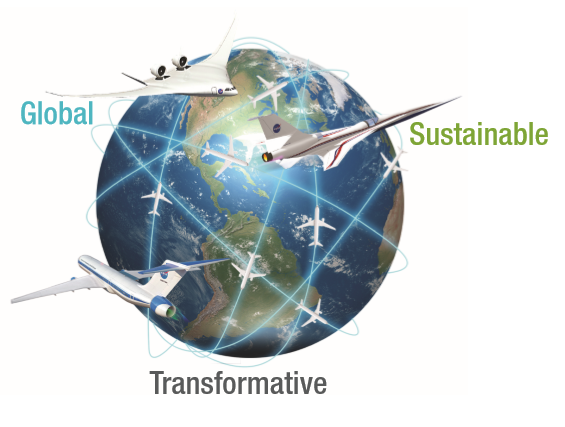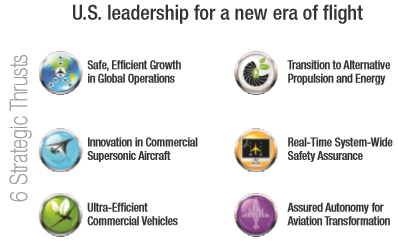The University Leadership Initiative (ULI) was introduced in 2015 by the Aeronautics Research Mission Directorate of the National Aeronautics and Space Administration (NASA ARMD). Through the ULI, universities and university-led partnerships are positioned to provide strategic leadership by identifying and addressing technical challenges. These proposer-defined challenges represent distinct barriers that must be overcome in order to achieve the outcomes associated with each ARMD strategic thrust. The ULI provides funding and technical oversight to support proposers in developing the knowledge and capabilities necessary to overcome these barriers. This bottom-up approach to problem solving is intended to contribute to the development of the next generation of researchers and engineers.

University of Tennessee students test 3D printed airfoils in the ULI educational wind tunnel, as part of an aerospace engineering class assignment
In April 2017, NASA ARMD announced selections for five awards under the University Leadership Initiative. These awards are expected to fund up to $50 million in research, education and outreach activities over the next five years. The 2017 award portfolio includes research into aeronautics technology to improve the energy efficiency of commercial aircrafts, to enhance the safety and efficiency of air traffic management, to minimize noise from supersonic aircrafts, and to improve propulsion.
These research objectives represent system-level innovations, selected to advance the agency’s Strategic Implementation Plan. Taken together, these innovations have the potential to transform the aviation industry: altering the cost effectiveness, safety, reliability, and appearance of aviation.

NASA ARMD’s vision for the 21st Century: global, sustainable, and transformative research.
The University of Tennessee (UT) is excited to be among the institutions selected to lead this revolution in aeronautics. In the June 2017, UT was awarded a five-year, $9.9 million ULI award by NASA ARMD as part of the agency’s Ultra-Efficient Commercial Vehicles strategic thrust. UT will lead a team of university and industry researchers to develop a more aerodynamic wing for commercial aircrafts. These institutions and individuals are detailed under the Center Institutions and People.

The UT-led ULI center supports the achievement of the third strategic thrust: Ultra-Efficient Vehicles, which targets reductions in fuel consumption, emissions and noise.